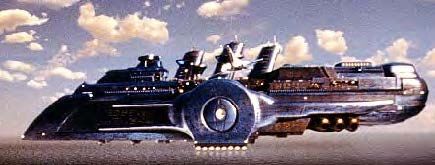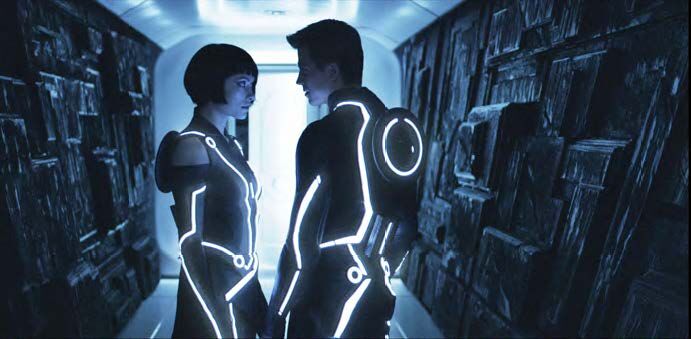|
|
||
|
Pro Tools
FILMFESTIVALS | 24/7 world wide coverageWelcome ! Enjoy the best of both worlds: Film & Festival News, exploring the best of the film festivals community. Launched in 1995, relentlessly connecting films to festivals, documenting and promoting festivals worldwide. Working on an upgrade soon. For collaboration, editorial contributions, or publicity, please send us an email here. User login |
Behind the Scenes, Behind The Lights
“Lights, Camera, Action and.. lights!” - You might hear this slightly unusual cue on the sets of “Tron Legacy,” “Star Trek,” “Watchmen,” and other films, where special effects lighting people are ready to shine, however, do not have much battery life in their arsenals. Allow me to introduce you to this often unknown side of moviemaking. Electrical circuits, switches, conductors, sensors and diodes – you might think this is a dry topic, but on the contrary... it’s not boring at all! Let’s start out small, with miniatures. Often used to create something that doesn’t exist, or to expand on something, miniatures are useful when a movie calls for expensive, time-consuming or destructive shots. The first rule with miniatures is to not tell viewers that they are actually looking at one. The White House in the “Independence Day” was a one-twelve scale copy of the real one. The Minas Tirith in “The Lord of the Rings” was about 23 feet high, while the Hogwarts School of Witchcraft and Wizardry in “Harry Potter” measured 50 feet across with more than 2,500 fiber optic lights to make all the lamps, widows and torches shine at night.
Miniature maker Bob Diepenbrock works on the Imperial Warship from “The Fifth Element.” The model features over 500 lights and 2,000 feet of fiber optics. Photo:ãDigitalDomain It’s common to build miniatures in different scales for various parts of a film, depending on what the effect should be. The more you go down in size, the faster the camera rolls, and brighter lights and more ingenuity by the SFX team are needed. They must figure out how to make all those small lights look real. Everything comes in handy, for example, small computer screen lights may work to light up a parking lot, office building or an underground tunnel. Wheat bulbs that are smaller than a rice grain could work for lamp posts, torches, and other barely visible but still very important elements of a set’s design. Bulbs are painted, edged or sandblasted to add realism.
Phlosten Paradise for “The Fifth Element” was 11 feet long, utilizing an impressive amount of lighting technology including neon, fluorescent bulbs, incandescent bulbs and fiber optics – almost the entire arsenal of miniature makers. On the set of “Start Trek: First Contact,” miniatures’ lighting techniques helped to bring the Borg costumes to life, with a little help of small incandescent bulbs, beloved by model makers for their extreme brightness. Those small bulbs, however, created some confusion between the camera and special effects lighting departments on the set. Each day, the director of photography and his team would spend some time to coat the bulbs to make them darker, while every night the lighting team would wipe it all off, thinking that some suit disintegration was happening. This back and forth action lasted for a couple weeks. “The Borgs had switches hanging off their butts and we had to chase them to turn the suit on and off,” remembers Alan McFarland, director of electronic solutions, who worked on the project. “We also had to mix our own colors to prevent the Borgs from shining like Christmas trees. We would use colors like purple or magenta and mix them with something else to get bulbs that you couldn’t find in retail.”
Patrick Stewart in “Star Trek: First Contact” The Borg Queen head had its own challenge. Between the mechanical parts and wires inside of the head, there was no space left for the batteries. To make the Queen’s eyes move and spine jiggle, the special effects team decided to use batteries, new at the time, that were the size of a piece of chewing gum and lasted only eight minutes. Alan McFarland wasn’t too worried about life of the batteries. By the time they made “First Contact,” the team had worked together for over a decade and director Jonathan Frakes was very experienced in directing the group. He comments, “We got it in just two takes, what was probably for good. Even though the spine was detachable when I saw Patrick Stewart ripping it off and throwing it on the ground, I got scared that we may not have another take. But we put everything together in less than 30 seconds, did another take and Jonathan was happy with it.”
Garrett Hedlund and Olivia Wilde light up by each other’s suits on the set of “Tron: Legacy.” To make those amazing lit suits for “Tron: Legacy,” the special effects lighting people had to discover the latest innovations available. It wouldn’t have been possible to make those futuristic glowing costumes without the new experimental technology they managed to find. There was a new, super secret source of power in town and they wanted it. After jumping through some burning hoops, the SFX lighting team members were asked to sign nondisclosure agreements and became the second group, after Tesla, to ever use these new batteries. To monitor the suits, a whole new control system was created to switch them on and off, independently or all at once. The more actors on set, the more accurate the signal would be. The script would roll on the operator’s screen and he could light up or kill the shine of an actor’s costume on command, helping to save those precious minutes of battery power.
Billy Crudup as Dr. Manhattan on the set of the “Watchmen” in a costume covered with LED lights. When the movie “Watchmen” was in production, LED lights just started to come onto the scene. One roll cost about $200, compared to today’s $10 for the same roll. Even though Doctor Manhattan was never meant to be just some guy in a blue, glowing suit, his creators spent a lot of effort to put Billy Crudup in one. His suit was covered in motion trackers because they wanted this character to appear to be computer-generated. What was extremely difficult, almost impossible to do in CGI (computer-generated imagery) was to recreate this blue glow radiated by Dr. Manhattan to the world around him. Even though one never actually sees the costume directly, one does see its effect. The work by lighting special effects experts is almost invisible if it is done right, but a lot of movies would have looked very different without these individuals “standing behind the light.” They face challenges as part of their daily work routines, but for them, nothing is impossible. Guest contributor - Yulia Shibinskaya November 16, 2018
20.06.2019 | French Riviera Film Festival's blog Cat. : film effects lighting effects SFX specialeffects PROS
|
LinksThe Bulletin Board > The Bulletin Board Blog Following News Interview with EFM (Berlin) Director
Interview with IFTA Chairman (AFM)
Interview with Cannes Marche du Film Director
Filmfestivals.com dailies live coverage from > Live from India
Useful links for the indies: > Big files transfer
+ SUBSCRIBE to the weekly Newsletter Deals+ Special offers and discounts from filmfestivals.com Selected fun offers
> Bonus Casino
About French Riviera Film Festival Muj Nicole Muj Nicole Organizers Gotham Chandna FESTIVAL CO-FOUNDER Nicole Muj FESTIVAL CO-FOUNDER
View my profile Send me a message The EditorUser contributions |
























 View on Google Maps
View on Google Maps


